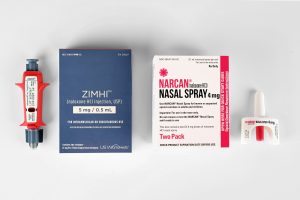Gout: The Basics
What is gout?
Gout is a form of arthritis characterized by sudden and severe attacks of pain, swelling, and tenderness in one or more joints. It is caused by an excess amount of uric acid in the blood, which then forms crystals in the joint.
How it Occurs
Uric acid is a byproduct of the breakdown of purines—a natural substance found in the body and in certain foods. Normally uric acid dissolves in the blood, filters through the kidneys, and is excreted in urine, but if too much is produced or not enough is excreted, it builds up. This condition is called hyperuricemia. While not everyone with hyperuricemia develops gout, it does increase the risk.
When uric acid accumulates it can crystalize, and needle-like crystals deposit in joints. The big toe is most frequently affected because it is the furthest extremity from the body and has a cooler temperature, allowing crystals to form easier. Other commonly affected joints are ankles, knees, elbows, wrists, and fingers. The affected area may be swollen, red, and warm. Range of motion can be limited. The pain is typically sudden and intense. Some describe that even the slightest touch of a bedsheet can cause excruciating pain.
Risk factors for gout:
- Male gender
- Hypothyroidism
- Diabetes
- High blood pressure
- Cardiovascular disease
- Renal dysfunction
Common triggers of gout:
- Diet high in purines
- Red meat
- Organ meats (such as liver, kidney)
- Seafood (such as scallops, mussels, tuna, sardines, anchovies, salmon, trout)
- Beer
- High fructose corn syrup
- Alcohol consumption
- Sugary beverages
- Obesity
- Dehydration
Non-pharmacological Treatments
There are medications that can treat gout attacks and help prevent them, but there are also non-pharmacologic therapy options such as:
- Resting the joint
- Applying ice
- Staying hydrated
Pharmacological Treatment for Acute Gout Attacks
The goal for acute gout attacks are to provide rapid and safe pain relief. These medications work by reducing inflammation, which will help with the pain. These treatments are used only for a short duration to reduce risk of adverse effects.
Place in therapy | Drug Class | Examples | Comments |
| 1st line option | NSAIDs | ibuprofen, indomethacin, naproxen, sulindac |
|
| 2nd line option | Corticosteroids | prednisone, methylprednisolone |
|
| 2nd line option | Antigout | colchicine |
|
| Last line option | Interleukin-1 inhibitors | anakinra, canakinumab |
|
Long-term Treatment for Chronic Gout
If left untreated, complications like kidney stones and tophi (hard, visible lumps that form at the affected joint) can occur, along with more frequent attacks. Goals of treatment for chronic gouty arthritis are to prevent future attacks and complications by lowering the level of uric acid in the blood with urate lowering therapy (ULT).
Urate Lowering Therapies (ULT) | |
| Medication | Comments |
| Allopurinol | 1st line treatment option, cheapest option |
| Febuxostat | 2nd line treatment, increased risk for cardiovascular events |
| Probenecid | Only works for those who overproduce uric acid |
| Pegloticase | Last line option for severe gout, expensive |
Written by: Parker Sanford, PharmD
You may also be interested in:
https://corumpharmacy.com/over-the-counter-otc-medication-safety/
References
1. https://rheumatology.org/gout-guideline
2. https://www.mayoclinic.org/diseases-conditions/gout/symptoms-causes/syc-20372897
3. https://www.arthritis.org/diseases/gout
4. https://my.clevelandclinic.org/health/diseases/4755-gout




